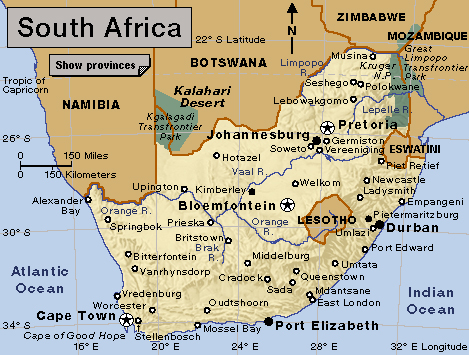Pietermaritzburg << `pee` tuhr MAR ihts burg >> is the capital and a major trading center of the province of KwaZulu-Natal in South Africa. The city lies in the Natal Midlands, northwest of Durban. It has a pleasant climate, with average temperatures ranging from about 73 °F (23 °C) to about 86 °F (30 °C).

Pietermaritzburg is known as the “city of flowers” because of its many parks and gardens. It is also famous for its unique Victorian and Edwardian architecture. The city has numerous national monuments. The city hall, built in 1901, is one of the largest brick buildings in the Southern Hemisphere. Products made in the city’s factories include aluminum, rubber, and furniture. Pietermaritzburg has a campus of the University of KwaZulu-Natal. Many people in Pietermaritzburg are descendants of immigrants from what are now India and Pakistan. The city’s largest population group consists of Zulu people, a Black African ethnic group.
Pietermaritzburg was established in 1838 as a capital for voortrekkers. Voortrekkers were Boers (people of Dutch, German, or French ancestry) involved in the Great Trek. Pietermaritzburg was named after two prominent trekker leaders, Piet Retief and Gerhardus Maritz.
In the mid-1990’s, after the end of South Africa’s racial segregation system called apartheid, Pietermaritzburg was merged with the Black African townships of Edendale and Imbali and other nearby communities. In 2000, Pietermaritzburg, including Edendale and Imbali, was merged with the town of Ashburton and other surrounding communities and rural areas to form the Msunduzi local municipality. Msunduzi has a population of 817,725.
See also Natal; KwaZulu-Natal.
